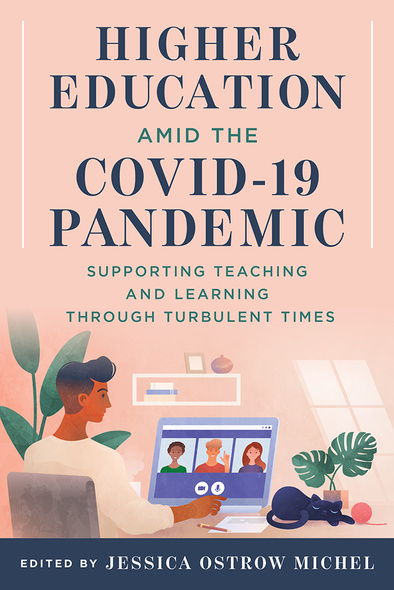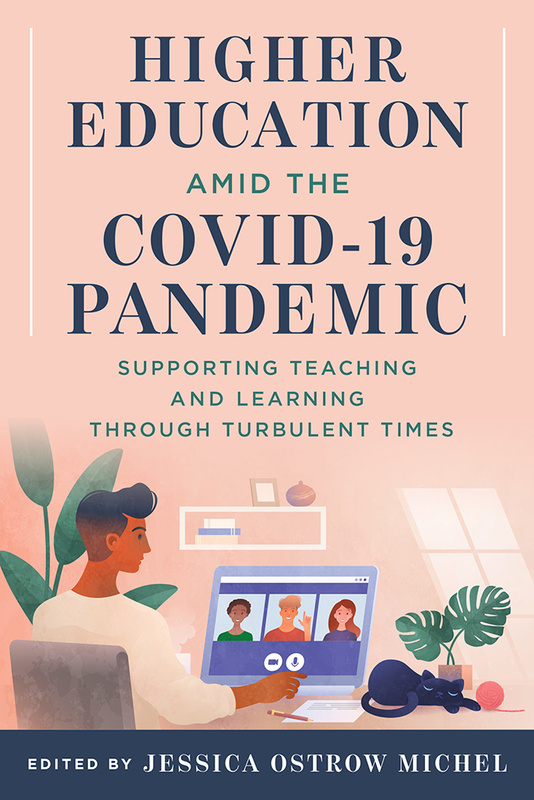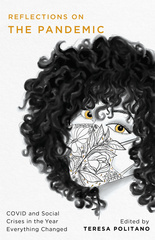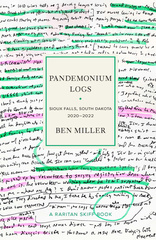
Higher Education amid the COVID-19 Pandemic
Supporting Teaching and Learning through Turbulent Times
The global pandemic continues to threaten so much of the work that we do across higher education. The perspectives provided in this extremely timely and impressive volume can inform how academic leaders approach teaching and learning in navigating this crisis and future crises.
Winter Reading COVID-19 books round-up
The global pandemic continues to threaten so much of the work that we do across higher education. The perspectives provided in this extremely timely and impressive volume can inform how academic leaders approach teaching and learning in navigating this crisis and future crises.
Winter Reading COVID-19 books round-up
JESSICA OSTROW MICHEL is a postdoctoral research fellow in the School for Environment and Sustainability at the University of Michigan in Ann Arbor, Michigan.
Table of Contents
Section I: Setting the Stage
Chapter 1: Introduction--Jessica Ostrow Michel, University of Michigan
Chapter 2: The Way We Were: The Landscape of US Online Learning on the Eve of the COVID-19 Pandemic--Ron Legon & Bethany Simunich, Quality Matters™
Chapter 3: Reflecting on Epistemic and Pedagogical Incongruities: An Autoethnography--Karla I. Loya, University of Hartford
Section II: Work-Life (Im)Balance
Chapter 4: Faculty Work-Life in the Midst of a Pandemic--Lisa Wolf-Wendel & Amanda Mollet, University of Kansas
Chapter 5: Faculty Work-Life in a Time of Crisis: Widespread Challenges and Institutional Responses--Katalin Szelényi, UMass Boston
Chapter 6: Rural Students, Online Learning, and COVID--Andrew Koricich & Sonja Ardoin, Appalachian State University
Chapter 7: COVID-19 Inflicting Further Challenges on Undocumented Students--H. Kenny Nienhusser, Omar Romandia, & Kiara Ruesta, University of Connecticut
Chapter 8: Exploring the Lens of International Students and Scholars during the COVID-19 Pandemi--Ruby Cheng & Mandy Hansen, University of Colorado Colorado Springs, & Tony Lee, Texas A&M UniversityCommerce
Section III: Teaching across Institutional Types
Chapter 9: Pausing for the Pandemic: Engaging Community College Students during the COVID-19 Health Crisis--Pablo Avila & Dominique Zino, LaGuardia Community College
Chapter 10: Community College International Education in the Wake of COVID-19: Observations from a Study Abroad Program--Melissa Whatley, North Carolina State University
Chapter 11: Responding to the Pandemic Challenges and Opportunities at the Nation’s Tribal Colleges and Universities--Al Kuslikis, American Indian Higher Education Consortium
Chapter 12: Force Majeure: Historically Black Colleges and Universities Responses to “Acts of God”--Mahauganee D. Shaw Bonds, independent researcher and consultant, Nadrea Frederick D. Patterson, Research Institute (FDPRI) of UNCF (United Negro College Fund)
Chapter 13: An Unexpected Turn: How Two HBCU Students Affairs Professionals Responded to COVID-19--Travis C. Smith, Alabama State University, Mi’Kasa Patton, Jackson State University, & Gourjoine M. Wade, Grambling State University
Chapter 14: Education in a Distributed Environment from the United States Military Academy at West Point--Captain Frank Czernakowski, Major Elizabeth Lazarri, Major Edward Olson, Major Anita Phillips, Major Logan Phillips, & Major Jason Pomeroy, The United States Military Academy at West Point
Chapter 15: When Crisis Confronts Tradition: Can liberal arts colleges live up to their potential for excellent teaching in challenging times?--Charles Blaich & Kathleen Wise, Center of Inquiry at Wabash College and the Higher Education Data Sharing Consortium (HEDS)
Chapter 16: COVID-19 Crisis Leadership at a Small Liberal Arts College: Gustavus Adolphus--Valerie S. Banschbach, Gustavus Adolphus College
Chapter 17: Nimbleness, Resourcefulness, and Online Teaching--Glenn Geher, State University of New York at New Paltz
Section IV: Teaching across Disciplines
Chapter 18: Training Citizen Scientists and Future Public Health Heroes--Kim Mix, Loyola University of New Orleans
Chapter 19: Empowering Student Inquiry During a Global Pandemic in Environmental Studies and Science Curricula--Karin Warren, Randolph College
Chapter 20: The Intersection of Higher Education and Business in Turbulent Times: A Case Study of Management Education--Vicki L. Baker, Albion College
Chapter 21: Teaching Architecture in Turbulent Times--Elizabeth Golden, Kimo Griggs, Richard Mohler, & Tyler Sprague, University of Washington
Chapter 22: Painting Doubt--Matt Saunders & Aurora Andrews, Harvard University
Chapter 23: So You Think Your Students Are Engaged? Ask Again.--Sharon Gorman, Northern Arizona University
Chapter 24: History, Digital Pedagogy, and Remote Instruction in a Time of Disruption--Jessica Parr, Simmons University
Chapter 25: Good Enough: Teaching about Race and Racism in Challenging Times--Cyndi Kernahan, University of Wisconsin-River Falls
Chapter 26: Integrating, Social and Emotional Skills into Online Education--Catherine R. Barber & Janet K. McCollum, University of St. Thomas
Chapter 27: Rise of the Digital Underground: Curriculum Design, Instruction, and Critical Hip-hop Implications for Distance Learning--Donovan Livingston, Wake Forest University
Section V: Futuring the Professoriate in light of COVID-19
Chapter 28: Supporting Doctoral Students amid the COVID-19 Health Crisis--Katalin Szelényi & Karl V. Bell, UMass Boston
Chapter 29: Supporting Doctoral Students Completing the Dissertation During COVID-19--Ramon B. Goings. University of Maryland, Baltimore County
Chapter 30: Teaching and Learning During a Pandemic Lessons from a graduate student instructor during the COVID-19 outbreak--Jarett Haley, University of Michigan
Chapter 31: Exploring potential equity consequences of COVID-19 on faculty hiring--Damani White-Lewis, University of Maryland & Román Liera, University of Southern California
Chapter 32: Capitalizing on COVID: EdTech, Higher Ed, and Disaster Capitalism--Morgan Anderson, University of Northern Iowa
Chapter 33: The Impacts of Health Crises on International Higher Education Mobility--Mirka Martel, Institute of International Education
Chapter 34: Conclusion--Jessica Ostrow Michel, University of Michigan







